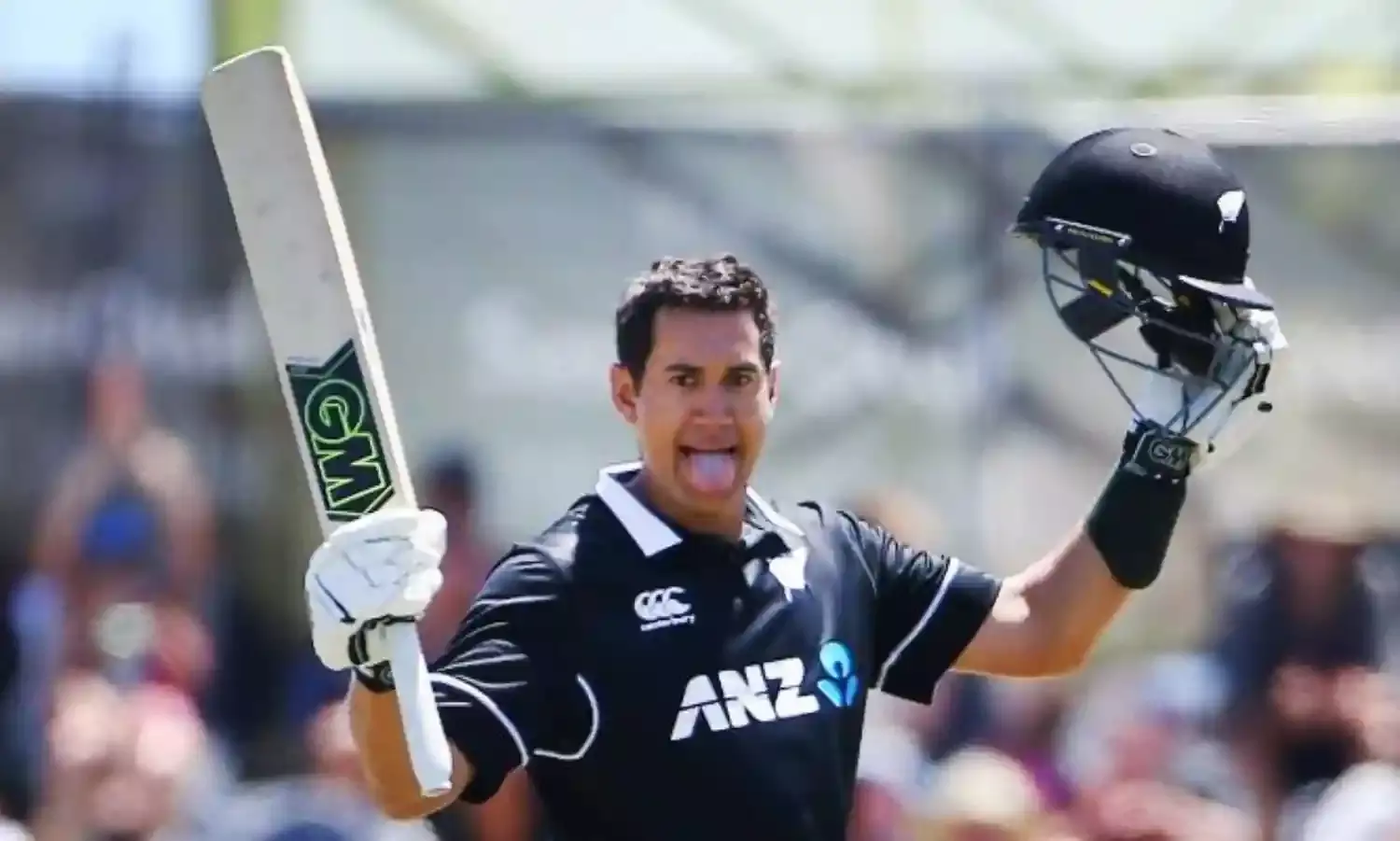A Landmark Game for Ross Taylor
Taylor’s brilliance with the bat

He has been New Zealand’s batting bulwark since 2006. Across the three formats he has been a source of immense strength to the New Zealand line- up. Known for his power packed shots and innovative stroke play he is a natural for the shorter versions. But then he can also bat for long periods displaying the age old qualities of dedication, determination and concentration and this also makes him ideal for the sport’s traditional format. He has seen it all while playing a notable role in New Zealand’s rise as a cricketing nation. And yet the Test against India at Wellington starting on February 21 will be very special for Ross Taylor. It will be his 100th Test making him only the fourth New Zealander after Stephen Fleming, Daniel Vettori and Brendon McCullum to achieve the feat.
In their formative years from the 30s to the 60s when they were the whipping boys of international cricket New Zealand still managed to produce the odd outstanding batsman. Charlie Dempster, Martin Donnelly and Bert Sutcliffe were the pioneers attracting international attention either by their sparkling strokeplay or while shining in adversity. In the 70s even as New Zealand shed their Cinderalla tag thanks mainly to Richard Hadlee there also emerged a world class batsman in Glenn Turner who proved to be one of the most difficult batsmen to dislodge. In the 80s and 90s Martin Crowe was acknowledged to be one of the finest batsmen in the world.
And then in the first decade of the new millennium came Taylor and very soon it was obvious that here was a batsman fit to take his place among New Zealand’s greats. In only his third ODI he got an unbeaten 128, in the third T-20 that he batted he got a half century and in his third Test he scored a hundred.
The start was impressive enough but it wasn’t just the scores that caught the eye but his approach. There were no signs of nerves, he was a picture of confidence and it was clear that allied to his prodigious talent he had the impeccable technique and the unflappable temperament that could make him in racing parlance a stayer and not a sprinter. And he has certainly stayed the course being New Zealand’s most dependable batsman. Not every cricket player can be highly successful in all three formats but Taylor who turns 36 next month has proved to be highly adept either in Test cricket or the shorter versions.
Consider his record in the traditional format first. With a tally of 7174 runs he is already New Zealand’s highest run getter in Tests. And with 19 hundreds he is just below Kane Williamson’s tally of 21. His average of 46.28 is next only to Williamson’s 51.44. And he has not really dawdled along for his overall strike rate of 60 is quite remarkable. With all that he has it in him to play a long innings so typical of Test cricket. He has hit three double hundreds and in compiling 290 – his highest score – he batted almost 9-1/2 hours against Australia at Perth in 2015.
Again when it comes to ODIs Taylor with a tally of 8570 is the highest run getter for New Zealand and this time he is the leading century maker too with 21. His highest score of 181 not out is next only to Martin Guptill’s two scores of 189 not out and 237 not out among New Zealanders. A strike rate of 83.5 – allied to an average of 48.7 - across 231 ODIs is highly acceptable. And in the newest format he has been perfectly at home with his tally of 1909 runs putting him in the top 12 of run getters in T-20 internationals with his strike rate of 122 being an embellishment.
Taylor has played so many glorious knocks that it would be difficult to single out one as his best. And yet I am tempted to particularly mention one innings for which he will be remembered most fondly. Against Pakistan at Pallekele in the 2011 World Cup on his 27th birthday he simply tore into the bowling like few batsmen have in the tournament’s history. He hit 131 not out off 124 balls with eight fours and seven sixes. In the last four overs New Zealand got 92 runs – something unheard of in ODIs – with Taylor playing the dominant role against an attack that included Shoaib Akthar, Umar Gul, Abdul Razzaq and Shahid Afridi. It was Taylor at his brutal best.
Taylor’s brilliance with the bat almost camouflages the fact that he is one of the finest slip fielders of all time. With absolute nonchalance he makes the most difficult of catches look simple displaying sharp reflexes and uncanny anticipation. His tally of 145 catches from 99 Tests – roughly 1.5 catches a match - makes him one of the most successful fielders in the game’s long history.



